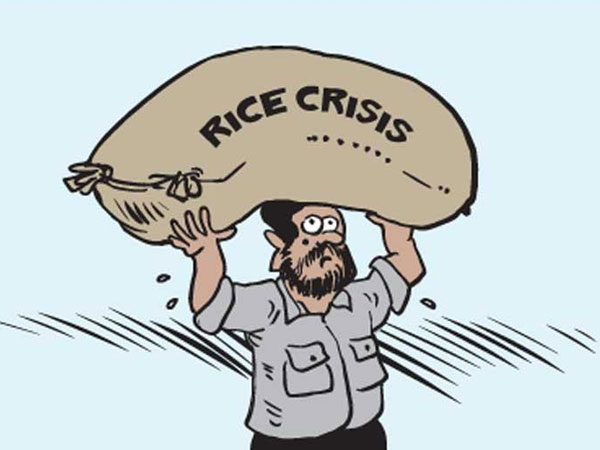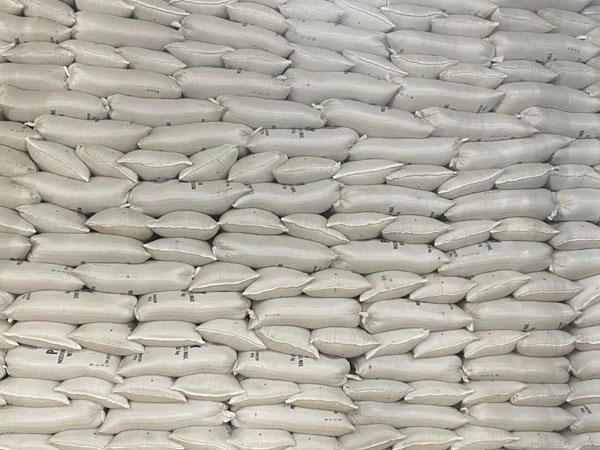 The first thorny issue that the National People’s Power (NPP) government encountered was a shortage and price hike of rice. The first news item on the matter was carried in the Daily Mirror barely a week after NPP leader Anura Kumara Dissanayake assumed office as the President on September 22 last year.
The first thorny issue that the National People’s Power (NPP) government encountered was a shortage and price hike of rice. The first news item on the matter was carried in the Daily Mirror barely a week after NPP leader Anura Kumara Dissanayake assumed office as the President on September 22 last year.
When the problem dragged on for months with many measures the authorities took to resolve it failing, government ministers vowed that never in their tenure would they allow another rice crisis to crop up. Six months on, have they taken steps to keep their pledge? Can we be assured that the country would not see another rice crisis? We are being reminded of this pledge with stories emanating these days from the rice producing areas about rice farmers accusing the authorities over low prices for their ‘Yala Season’ production and failure on the part of the government to purchase paddy.
When the issue cropped up last September, Opposition parties made a huge fuss about the situation, attempting to give an impression that the rice shortage and price increase is unprecedented whereas it was not. The government blamed the former government for not maintaining accurate data on rice production and distribution, which was true, while accusing former President Ranil Wickremesinghe for free distribution of rice to needy families which was aimed at last year’s Presidential election.
However, the problem lasted over three months until the ‘Maha Season’ rice harvest reached the market. The government first discussed with the rice millers, assigning controlled prices for various varieties of rice, believing that they have hoarded rice, a popular presumption in the country. However, President Dissanayake himself stated later during a televised discussion that stories about hoarding was a myth. The price control also did not work in the face of presumed market manipulations by the traders.
Then the authorities attempted to purchase paddy through the Paddy Marketing Board (PMB) to create a buffer stock, but that too, failed. Finally, they had to import rice with an import duty of Rs. 65 to strike a balance between the prices of local rice and imported rice. The NPP leaders who boastfully ruled out before the election importing rice during their tenure have now changed the tune to say that imported rice would offset any shortage in the market in the future.
The government’s claim that there was no accurate date on rice production and distribution was proved later by conflicting figures presented by Agriculture Ministry officials on paddy production on January 21 during a Committee on Public Finance (COPF) meeting chaired by Samagi Jana Balawegaya (SJB) MP Dr. Harsha De Silva. While the rice consumption in Sri Lanka is about 2.4 million metric tons, former Agriculture Minister Mahinda Amaraweera told media in January that the paddy production in 2024 was 4.5 million metric tons. That could have yielded about 3 million metric tons of rice -- a surplus of 560,000 metric tons over consumption -- as the paddy-to-rice ratio is 5:3, according to the Agriculture Ministry. Yet, later it transpired that these statistics in respect of year 2024 do not reflect the true situation.
It was President Dissanayake who first revealed in December the absence of accurate data on rice production and consumption. Has the Agriculture Ministry resolved this issue? Has it built a data base on production and consumption?
It appears that the authorities have to reconsider their strategy on the buffer stock. During the last Maha Season, farmers lamented the low price paid by private traders as the government did not have a mechanism to purchase their paddy. Then, the NPP government deployed the security forces to clean the granaries of the PMB which had been long closed and neglected, in order to purchase paddy -- but only to be ignored by the very farmers, as private traders by that time had started to purchase paddy at a price little higher than the government’s-controlled price. Some farmer organisations vowed not to sell a single grain to the PMB. Now again the farmers are complaining about low prices.
There seems to be an issue with the attitudes of farmers as well in this matter. They are not interested in an alternative mechanism to the private traders in the paddy market. They are not prepared to support the government’s effort to strengthen the PMB as such a mechanism which would help them and the rice consumers alike. On the other hand, consumers pay, as various taxes, for the development of irrigations, fertiliser subsidy and compensation for any crop damage in case of floods and drought, which farmers benefit from.
Featured News
Has the rice crisis been resolved?
12 August 2025
See more news
22 December 2025
22 December 2025
Top News
22 December 2025














© Copyright 2025 The SSResource Media.
All rights reserved.